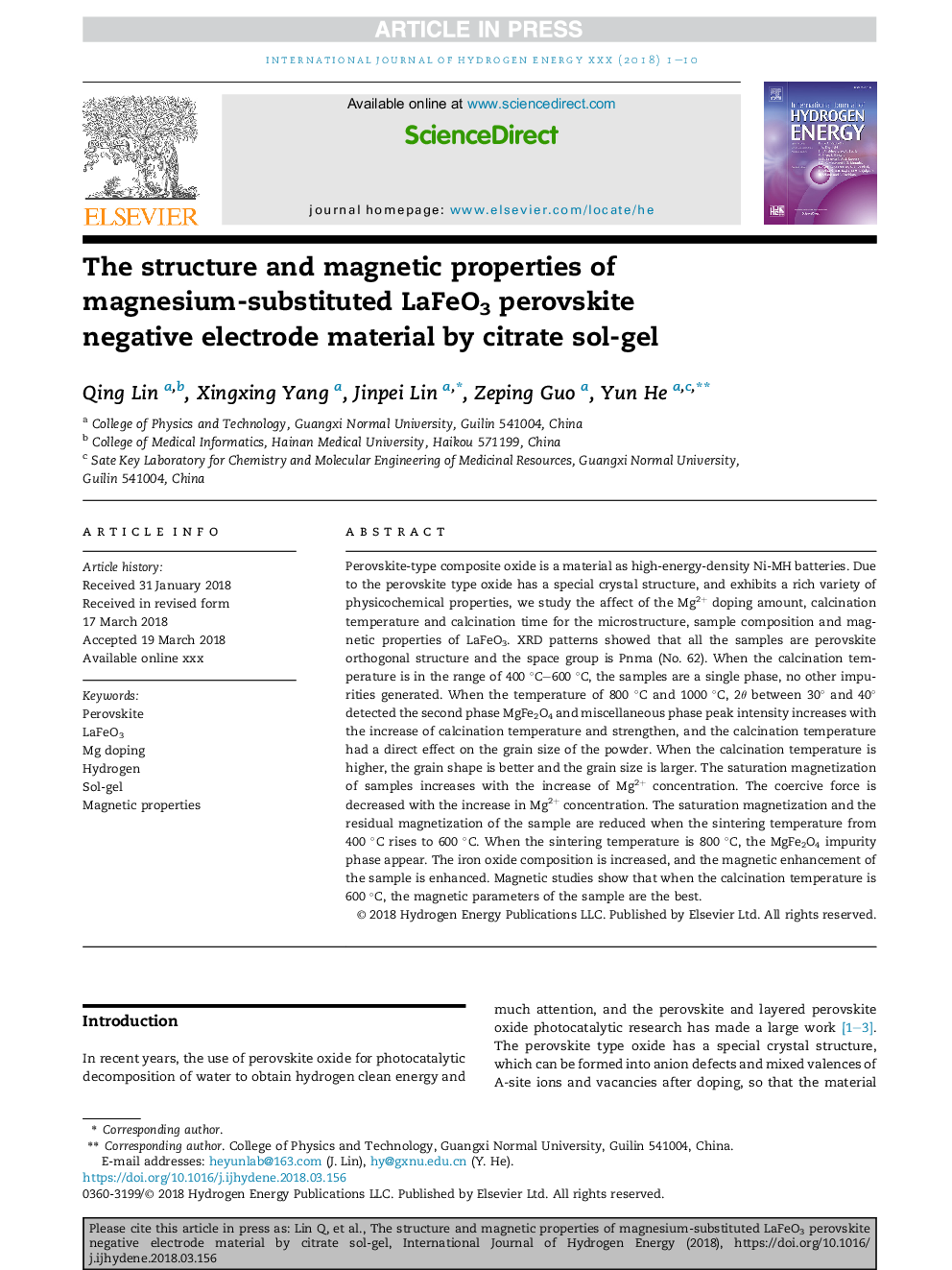| Article ID | Journal | Published Year | Pages | File Type |
|---|---|---|---|---|
| 7705465 | International Journal of Hydrogen Energy | 2018 | 10 Pages |
Abstract
Perovskite-type composite oxide is a material as high-energy-density Ni-MH batteries. Due to the perovskite type oxide has a special crystal structure, and exhibits a rich variety of physicochemical properties, we study the affect of the Mg2+ doping amount, calcination temperature and calcination time for the microstructure, sample composition and magnetic properties of LaFeO3. XRD patterns showed that all the samples are perovskite orthogonal structure and the space group is Pnma (No. 62). When the calcination temperature is in the range of 400 °C-600 °C, the samples are a single phase, no other impurities generated. When the temperature of 800 °C and 1000 °C, 2θ between 30° and 40° detected the second phase MgFe2O4 and miscellaneous phase peak intensity increases with the increase of calcination temperature and strengthen, and the calcination temperature had a direct effect on the grain size of the powder. When the calcination temperature is higher, the grain shape is better and the grain size is larger. The saturation magnetization of samples increases with the increase of Mg2+ concentration. The coercive force is decreased with the increase in Mg2+ concentration. The saturation magnetization and the residual magnetization of the sample are reduced when the sintering temperature from 400 °C rises to 600 °C. When the sintering temperature is 800 °C, the MgFe2O4 impurity phase appear. The iron oxide composition is increased, and the magnetic enhancement of the sample is enhanced. Magnetic studies show that when the calcination temperature is 600 °C, the magnetic parameters of the sample are the best.
Related Topics
Physical Sciences and Engineering
Chemistry
Electrochemistry
Authors
Qing Lin, Xingxing Yang, Jinpei Lin, Zeping Guo, Yun He,
